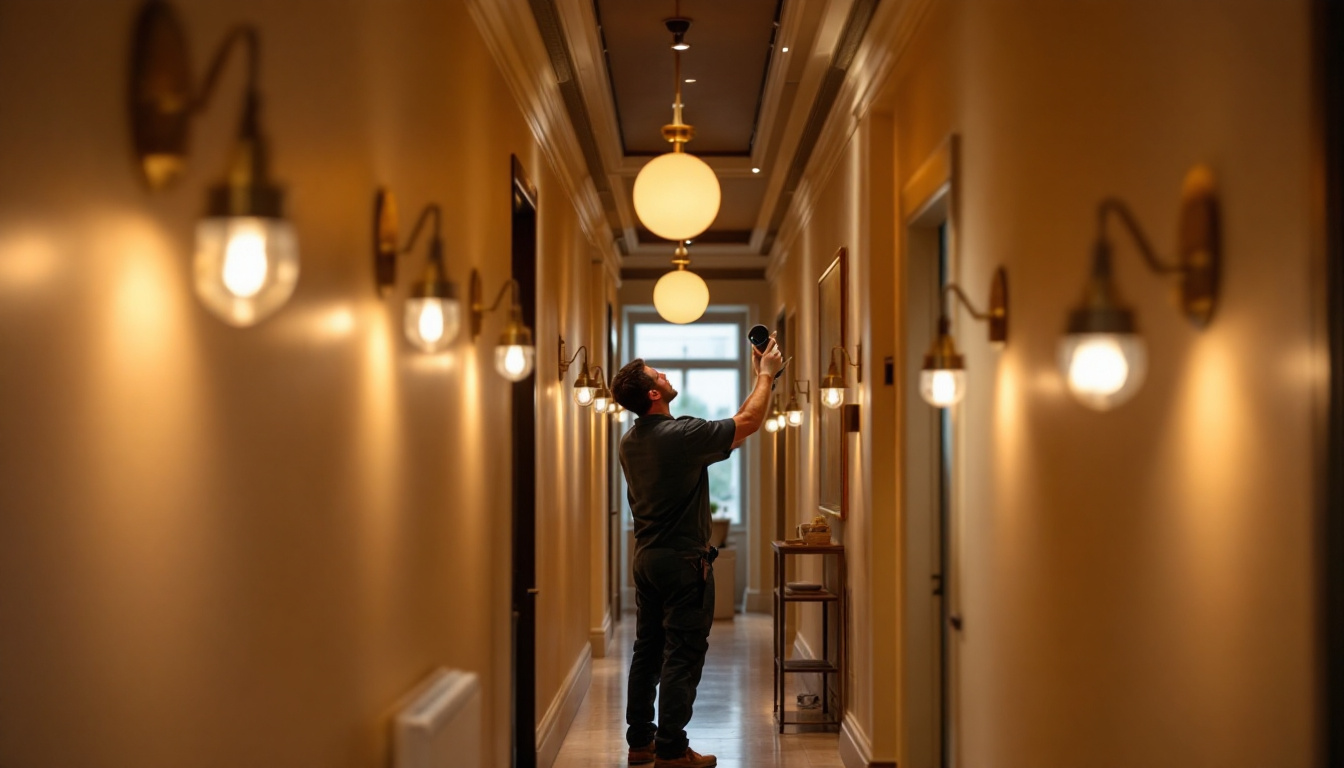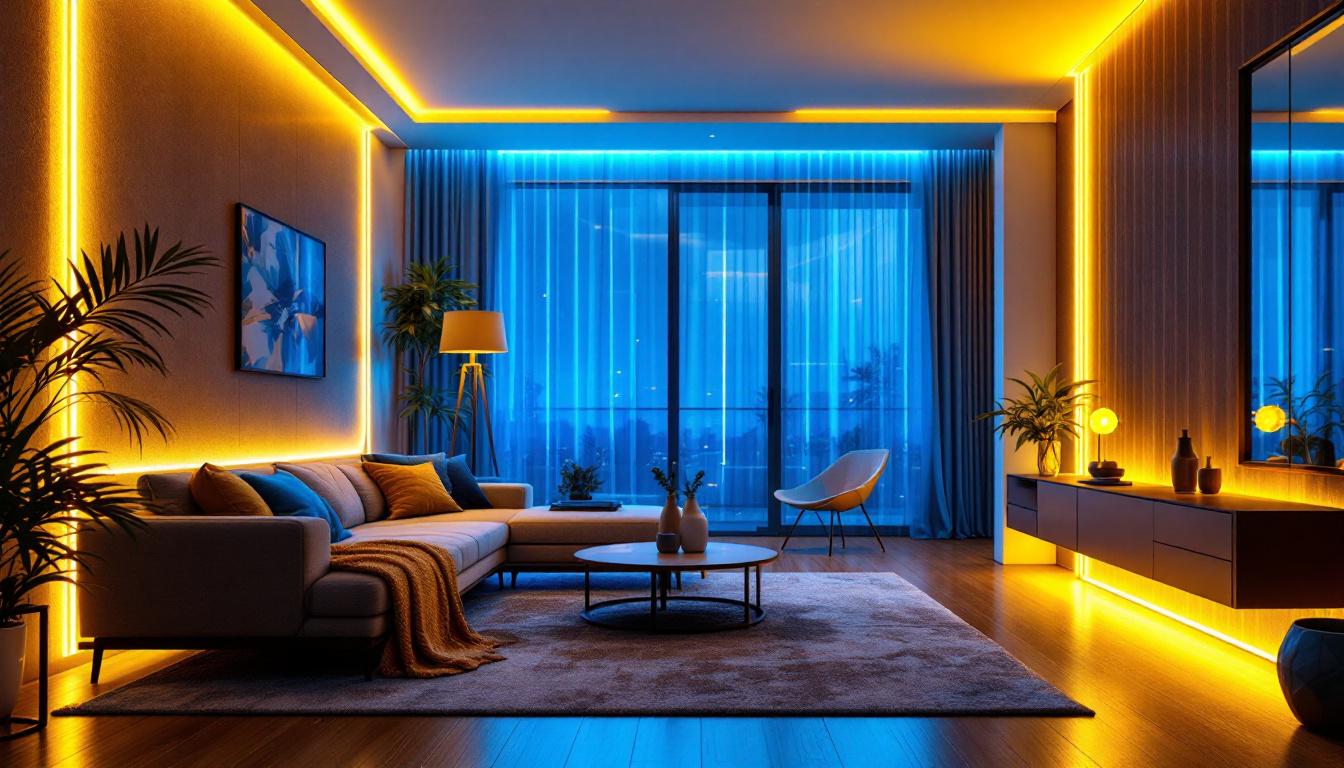
In the ever-evolving world of lighting technology, bright light bulbs have become a focal point for contractors seeking to provide optimal illumination solutions for their clients. Understanding the various types of bright light bulbs, their applications, and the latest advancements in lighting technology is essential for any lighting contractor. This article delves into the critical aspects of bright light bulbs that every contractor should be aware of to enhance their service offerings and meet client expectations.
Bright light bulbs come in various types, each with its unique characteristics and applications. As a lighting contractor, familiarity with these types will enable you to recommend the best solutions for different settings.
Incandescent bulbs have been a staple in residential and commercial lighting for decades. They produce a warm, inviting light that many people prefer for home environments. However, they are not the most energy-efficient option available. Understanding their limitations, such as shorter lifespan and higher energy consumption, is crucial when advising clients on lighting choices.
While incandescent bulbs are being phased out in favor of more energy-efficient options, they still hold a place in certain applications, particularly where color rendering and warmth are prioritized. Contractors should be prepared to discuss these factors with clients who may have a preference for traditional lighting solutions.
CFLs represent a significant advancement in energy efficiency compared to incandescent bulbs. They consume less power and have a longer lifespan, making them a popular choice for both residential and commercial applications. However, contractors should be aware that CFLs may take a moment to reach full brightness and can be sensitive to temperature fluctuations.
When discussing CFLs with clients, it’s essential to highlight their benefits, such as reduced energy costs and lower environmental impact. However, also be transparent about their limitations, including the presence of mercury, which requires careful disposal.
LED technology has revolutionized the lighting industry, offering unparalleled energy efficiency and longevity. LEDs are available in various color temperatures, allowing contractors to tailor lighting solutions to specific client needs. They are ideal for a wide range of applications, from residential to commercial and industrial settings.
One of the significant advantages of LEDs is their low heat output, which reduces cooling costs in spaces where lighting is used extensively. Additionally, their durability and resistance to breakage make them a preferred choice for high-traffic areas. As a lighting contractor, staying informed about the latest LED innovations and options will enhance your ability to provide cutting-edge solutions.
When discussing bright light bulbs, understanding brightness and how it is measured is paramount. Lumens (lm) are the standard unit of measurement for brightness, and knowing how to interpret this metric can significantly impact the recommendations made to clients.
Lumens measure the total amount of visible light emitted by a source. The higher the lumen rating, the brighter the light. For contractors, this means being able to assess the lighting needs of a space accurately. For instance, a living room may require around 1,500 to 3,000 lumens, while a kitchen may need up to 5,000 lumens for effective task lighting.
Understanding the relationship between lumens and wattage is also crucial. As energy-efficient bulbs like LEDs and CFLs produce more lumens per watt compared to incandescent bulbs, contractors must educate clients on how to achieve their desired brightness without excessive energy consumption.
Color temperature, measured in Kelvin (K), is another critical factor to consider when selecting bright light bulbs. It affects the ambiance and functionality of a space. Lower Kelvin ratings (2700K-3000K) produce a warm, cozy light, while higher ratings (5000K-6500K) provide a cooler, more energizing effect.
Contractors should guide clients in choosing the appropriate color temperature based on the intended use of the space. For example, warmer lights are often preferred in residential settings for comfort, while cooler lights are beneficial in workspaces to enhance focus and productivity.
As energy costs rise and environmental concerns become more pressing, energy efficiency is a vital topic for lighting contractors. Clients are increasingly seeking sustainable solutions that reduce their carbon footprint while still providing adequate illumination.
Energy Star ratings are a reliable indicator of a product’s energy efficiency. Lighting contractors should prioritize recommending bulbs with this certification, as they meet strict energy efficiency guidelines set by the U.S. Environmental Protection Agency. These bulbs not only save energy but can also lead to significant cost savings for clients over time.
Educating clients about the long-term benefits of investing in energy-efficient lighting can help them make informed decisions. Highlighting potential rebates or incentives for energy-efficient upgrades can also encourage clients to consider these options more seriously.
Beyond energy savings, the environmental impact of lighting choices is a growing concern. Many clients are interested in how their lighting decisions affect the planet. Contractors can play a crucial role in guiding clients toward eco-friendly options, such as LED bulbs that contain no hazardous materials and have a longer lifespan, thus reducing waste.
Additionally, promoting the use of smart lighting systems can further enhance sustainability. These systems allow for better control of lighting usage, reducing energy consumption and extending the life of bulbs. By integrating smart technology, contractors can help clients achieve both convenience and efficiency.
The rise of smart technology has transformed the lighting landscape, offering innovative solutions that enhance convenience and energy efficiency. As a lighting contractor, understanding these advancements is essential for staying competitive in the market.
Smart lighting systems allow users to control their lighting remotely through smartphones or voice-activated devices. This level of control not only enhances convenience but also promotes energy savings by allowing users to adjust lighting based on their needs and habits.
For contractors, recommending smart lighting solutions can set them apart from competitors. Offering clients the ability to automate their lighting, create schedules, and even integrate with other smart home devices can significantly enhance the overall appeal of a lighting project.
Smart lighting can be seamlessly integrated into existing home automation systems, providing a cohesive and user-friendly experience. Contractors should familiarize themselves with popular home automation platforms to better advise clients on compatible lighting options.
By understanding how to integrate smart lighting with other systems, such as security and HVAC, contractors can present comprehensive solutions that enhance the overall functionality of a home. This holistic approach not only meets client needs but also positions contractors as knowledgeable professionals in the industry.
Proper installation is crucial to ensuring the optimal performance of bright light bulbs. Contractors must adhere to best practices to guarantee safety, efficiency, and longevity of the lighting systems they install.
Before installation, it is essential to understand the electrical requirements of the chosen light bulbs. Different types of bulbs may have varying voltage and wattage specifications, which can impact the overall performance and safety of the lighting system.
Contractors should conduct thorough assessments of existing electrical systems to ensure compatibility with new lighting solutions. This includes checking for adequate wiring, circuit capacity, and the presence of dimmer switches, which may require specific types of bulbs to function correctly.
Proper placement and spacing of light fixtures are vital for achieving the desired lighting effect. Contractors should consider the function of each space and the specific needs of the client when determining fixture placement.
For example, in task-oriented areas such as kitchens or offices, focused lighting is essential, while ambient lighting is more appropriate for living spaces. Utilizing tools like lighting design software can help contractors visualize and plan effective layouts that meet both aesthetic and functional requirements.
The lighting industry is continually evolving, with new technologies and trends emerging regularly. For lighting contractors, staying informed is crucial for maintaining a competitive edge and providing clients with the best solutions.
Investing in continuing education and training can significantly enhance a contractor’s expertise. Workshops, webinars, and industry conferences provide valuable insights into the latest advancements in lighting technology and design.
Additionally, many manufacturers offer training programs on their products, which can be beneficial for contractors looking to deepen their knowledge and improve their installation techniques. Staying current with industry standards and innovations will not only enhance service offerings but also build trust with clients.
Building a network of industry professionals can provide contractors with access to valuable resources and insights. Engaging with other contractors, suppliers, and manufacturers can lead to collaborations and partnerships that enhance service offerings.
Participating in local trade associations or online forums can also facilitate knowledge sharing and foster relationships within the industry. Networking can lead to referrals and new business opportunities, making it a vital component of a successful lighting contractor’s strategy.
Bright light bulbs are more than just a source of illumination; they are a critical component of modern design and functionality. For lighting contractors, understanding the various types of bulbs, their applications, and the latest trends is essential for providing exceptional service and meeting client needs.
By staying informed about energy efficiency, smart lighting solutions, installation best practices, and industry trends, contractors can position themselves as experts in the field. This knowledge not only enhances their credibility but also enables them to deliver innovative and sustainable lighting solutions that satisfy the evolving demands of their clients.
Ready to elevate your lighting projects with the brightest solutions and the latest industry trends? At LumenWholesale, we provide lighting contractors like you with the highest quality, spec-grade lighting products at prices that can’t be beaten. Say goodbye to local distributor markups and hello to our extensive selection that meets rigorous industry standards. With free shipping on bulk orders, you can trust that you’re getting premium lighting at the best value — all with the convenience you deserve. Don’t compromise on quality or cost. Discover wholesale lighting at the best value today and light up your clients’ spaces with confidence and affordability.

Discover how partnering with lighting contractors for hallway lamp installations can illuminate your business success.

Discover effective strategies and proven techniques for lighting contractors to successfully retrofit LED can lights.

Discover the transformative power of 2 LED strip lights in modern lighting installations.

Discover the essential reasons why the A19 LED lamp is a must-have for every lighting contractor.